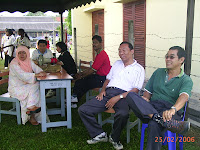The question has intrigued and baffled researchers for centuries. We all know people who defy the stereotype, yet it persists, demanding our attention. It leaves us wondering whether there is validity to the widespread belief that Jews are so much smarter than other people
But there can be little doubt that Jews have for centuries been substantially over-represented in many fields of learning and accomplishment. One must wonder, how could such a tiny, numerically insignificant group produce so many of the world’s smartest, most accomplished, and most influential people?
Jews comprise an amazing number of history’s most important figures, people who have had a profound impact on humanity: the Patriarch Abraham, whose life and teachings are considered sacred by Jews, Christians, and Moslems; Moses, the lawgiver to Jews and Christians; Jesus and his disciple, Paul, who founded and spread Christianity.
Looking back into the 20th century alone, one can clearly see that Jews have played many a key role in shaping the modern world (if not always in a positive way): physicist Albert Einstein; the father of psychoanalysis, Sigmund Freud; Communism’s Karl Marx; developers of the polio vaccine Dr’s Jonas Salk and Albert Sabin; and the leading developers of the first atomic bomb, as inspired by Einstein’s theories – among them, Felix Bloch, Niels Bohr, Otto Frisch, Robert Oppenheimer, Leo Szilard, and Edward Teller. Indeed, Jews were so dominant in the field of nuclear physics in Europe throughout the 1930’s that it was often referred to as “Jewish physics.”
Jews may not be history’s most popular people, but no other group has even come close to matching, proportionally, Jewish abilities and accomplishments. Combined with other commonly perceived Jewish traits such as ambition, curiosity, energy, imagination, and persistence, Jewish intelligence has elevated an incredible number of Jews to the top ranks of various fields.
Consider the following:
~The proportion of Jews with IQ’s of 140 or more is estimated to be about six times the proportion of any other ethnic group.
~ Although Jews constitute only about two-tenths of one percent of the world’s population, Jews won 29 percent of the Nobel Prizes in literature, medicine, physics and chemistry in the second half of the 20thcentury. So far this century, the figure is 32 percent. And these Jews of whom we speak were almost exclusively male Jews primarily of western European ancestry (less than one-tenth of one percent of the world’s population), in spite of pervasive discrimination, numerous legal barriers, frequent persecution, and the Holocaust.
~From 1870 until 1950, Jewish leadership in such fields as literature, music, visual arts, biology, chemistry, physics, mathematics, and philosophy equaled somewhere from four to fourteen times the Jewish proportion of the population in Europe and North America.
~In 1954, 28 children in the New York City public school system were found to have IQ’s of 170 or higher – 24 of these were Jewish.
And, of course, the extraordinarily high proportion of Jews in such fields as medicine, law, finance, literature, science, creative arts and the media is as obvious as it is astonishing. To some, these facts are awkward and even embarrassing, feeding stereotypes of “crafty” and “clever” Jews good at making money and flaunting their superiority to non-Jews. Indeed, the subject – the fact, if you will now allow -- of Jewish intellectual superiority is rarely if ever discussed in Jewish publications.
To explain this, we have a self-described “Scots-Irish gentile from Iowa,” Charles Murray of the American Enterprise Institute, author of the solidly documented “The Bell Curve”, which in 1994 stirred up a storm of controversy by discussing in not always politically correct language “differences in intellectual capacity among people and groups, and what those differences mean for America’s future.”
Murray has recently written a brilliant and convincing essay for the respected Jewish publication “Commentary,” on “Jewish Genius,” citing many of the above facts and material on which this article is based . This is the first time the magazine has systematically discussed this normally taboo topic that so many Jews are reluctant publicly to acknowledge.
Murray observes that the two most influential works of literature ever were written by and about Jews: the Hebrew and the Christian bibles, the so-called Old and New Testaments, and he goes on to cite numerous other examples of what can only be called Jewish intellectual supremacy.
Murray argues persuasively that “elevated Jewish intelligence is grounded in genetics” rather than being environmentally caused (by such factors as having books in the home), and that it is ‘substantially heritable.” And Jews, especially the Ashkenazim of central and western Europe, have been engaging for centuries in what basically amounts to selective mating and merging genes to produce children of high intelligence.
The Talmud (Pesahim 49a) says that “A man should sell all he possesses in order to marry the daughter of a scholar, as well as marry his daughter to a scholar.” In the Jewish community of the Middle Ages, the smartest men often became rabbis, and these learned men of high status were able to marry the daughters of successful merchants, thus “selecting” in favor of high intelligence.
At the same time, Christians were doing just the opposite: priests and monks of the dominant Roman Catholic Church – also usually among the best and brightest in their communities– were prohibited from marrying, thus “selecting out” through celibacy most of these intellectually superior men from the gene pool.
Murray also observes that “Sephardi Jews rose to distinction in many of the countries where they settled. Some economic historians have traced the decline of Spain after 1500 [following the expulsion of the Jews], and the subsequent rise of the Netherlands, in part to the Sephardi commercial talent that was transferred from one to the other.”













